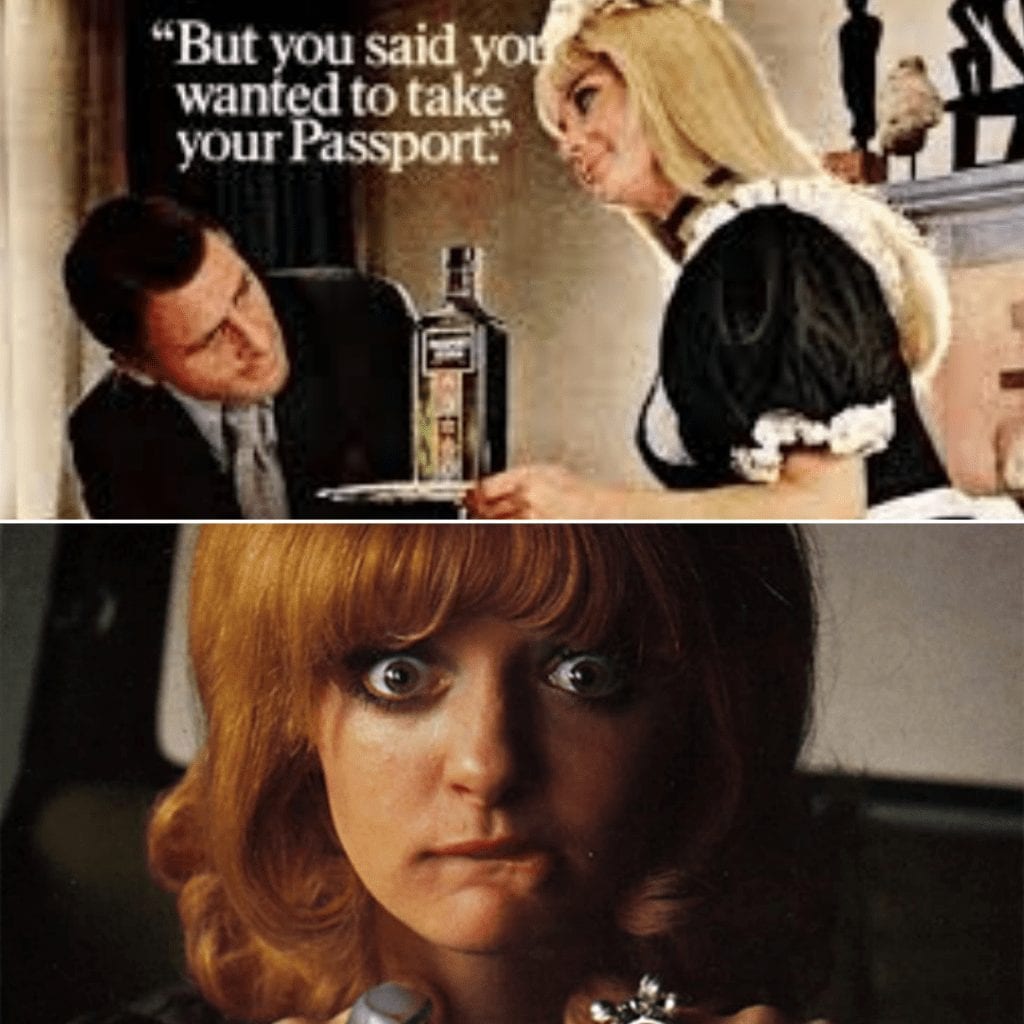
The world revolves around money, as much as we don’t want to admit it. Another debatable aspect we believe is that marketers influence how we spend our money.
Going back to the early years 19th-century when advertisements infiltrated newspapers and later our small screen, we can agree that advertising shape our attitudes. Soon our spending habits are also influenced by these marketing efforts. However, we’ve come a long way since the golden age of advertising when individual offensive and over-the-top ads would pass. That’s why several ads from the past would spark outrage, and perhaps see several ad executives lose their jobs.
That’s why we want to go back in time and revisit a couple of popular marketing campaigns from that time. These are some of the widely circulated vintage ads or banned commercials that wouldn’t conform to today’s standards because of their sheer offensiveness.
Simplified Driving
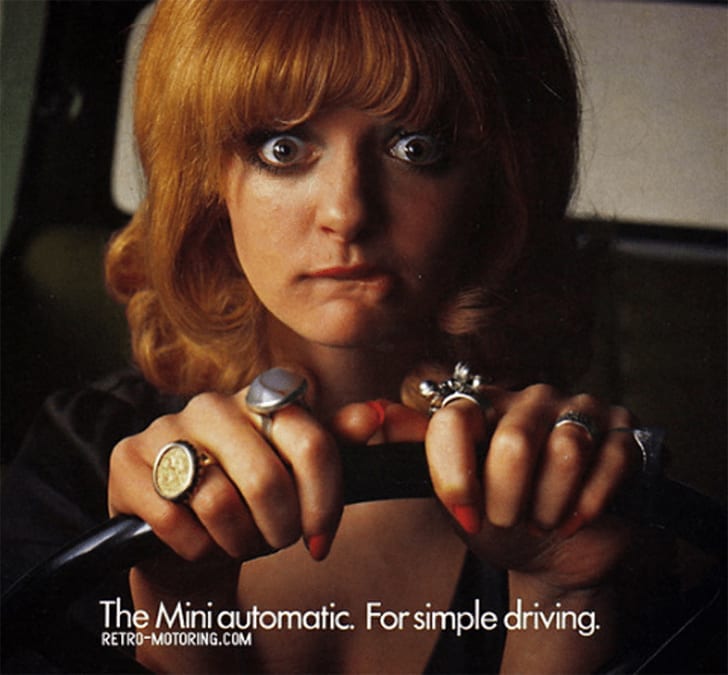
No one ever needs convincing to buy a car if they want one. The only thing you’ll need to persuade anyone about is why they should buy a specific vehicle over another.
There was a time when women were essentially second-class citizens. They couldn’t vote, hold certain job positions, or primarily live independently. When things gradually changed, even the automakers recognized the influence women had when it came to driving vehicle sales. They started manufacturing vehicles targeting this demographic, and the advertisements were structured to address “female concerns.” Take this Mini automatic ad, for instance; it audaciously implies that women aren’t great drivers and need things simplified.
They even employed the services of Goldie Hawn, who had just launched her acting career appearing in shows like Good Morning World. In the sitcom, Hawn played the role of the stereotypical “dumb blonde” who was dating a radio DJ.
If I Were A Man
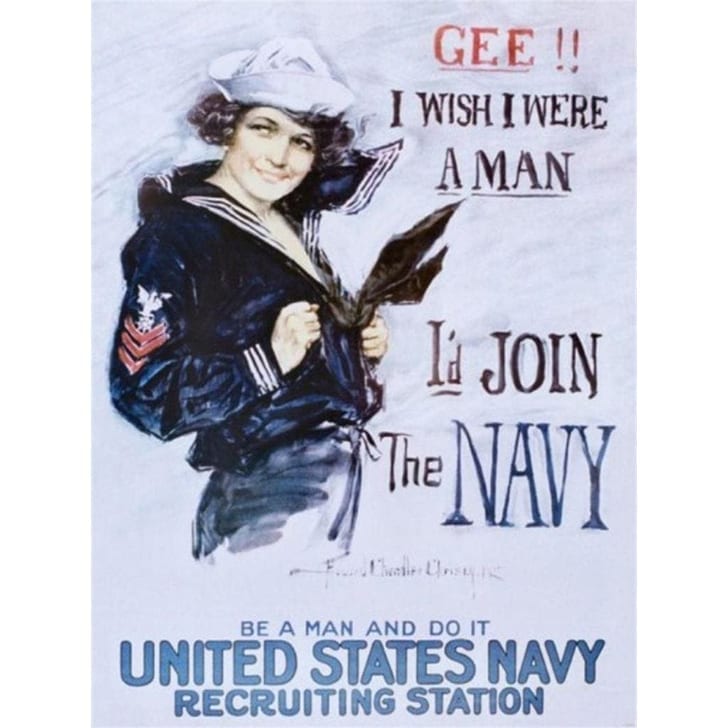
While most ad campaigns employed the angle of degrading women and making men look like the superior gender, a couple did try to shame men.
Military recruitment posters are amongst the most iconic going back in history. There have been great ones, but this one stands out like a sore thumb. It’s shaming men into wanting to sign up to join the Navy because women would jump at the chance to enlist if only they were men. The take-home is telling men to be men. While today men and women equally serve in the army, it wasn’t always the case.
Loretta Walsh went down in history as the first woman to serve with the U.S. armed forces in a designation other than a nurse. Walsh enlisted in 1917 and went on to become the very first female Navy petty officer.
Chin Reducer
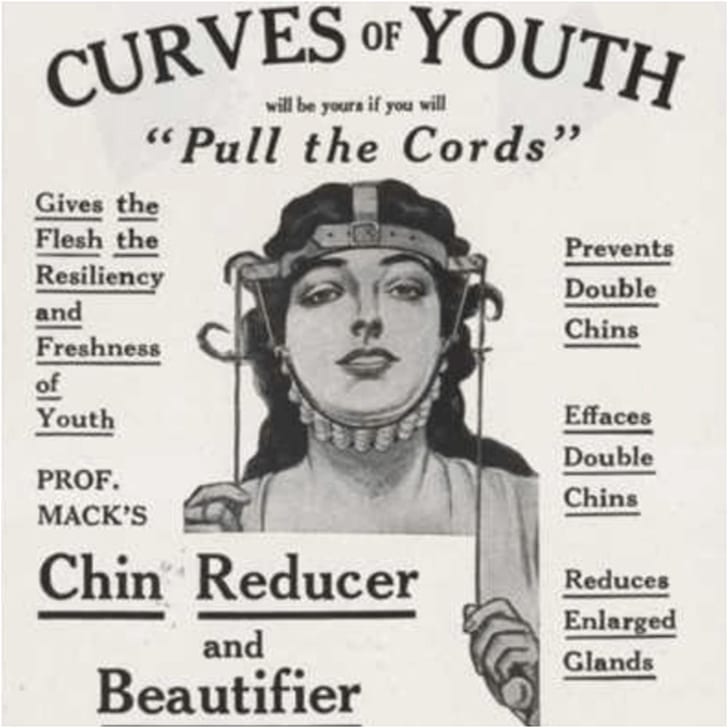
The quest for youth is never-ending, but back then, women were essentially required to look perfect. That’s why all manner of products and contraptions were manufactured to help them look youthful and beautiful.
Take the chin reducer, for instance, it promised to help women attain the freshness of youth. The beautifier claimed that it could help women prevent and avoid having a double chin. Women could also reduce their enlarged glands by wearing this tool of torture. It doesn’t look anything close to comfortable, and like most beauty products from back then, we imagine women had to wear it for long hours.
History has been littered with painful beauty trends that genuinely embody the “no pain, no gain” adage. If women weren’t using lead face powder to hide unsightly pox scars, they were busy squeezing drops of the deadly nightshade plant into their eyes to make them appear doe-eyed.
A Woman’s Place Is In The Kitchen
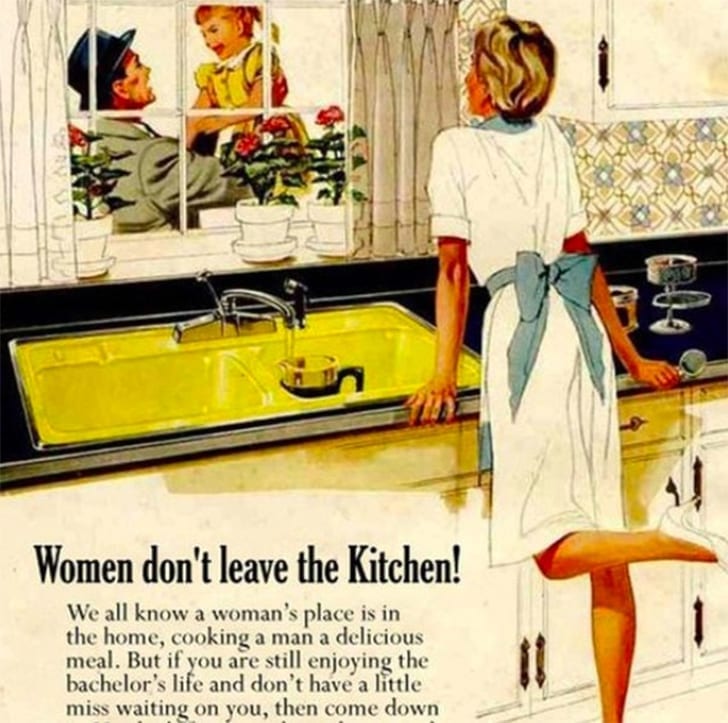
It was tough being a woman some seven decades back when just about every advertisement spelled it out; a woman’s place is in the kitchen.
Back then, the equivalent of today’s approach of using feminine appeal in advertising was painting women as controllable figures who did as they were told and knew their rightful place - the kitchen. This early 1900s diner ad would cause an uproar today because of the overt misrepresentation of a woman’s role. There’s also the suggestion that a man who doesn’t have a wife slaving in the kitchen has no option but to head down to the local diner to get fed.
Sadly, not much has changed with advertising in the 21st century. While they won’t offensively pen it down on an ad, there’s heightened exploitation of the female form in ad campaigns. The constant backlash hasn’t been enough to stop these misogynistic messages.
It’s A Man’s World
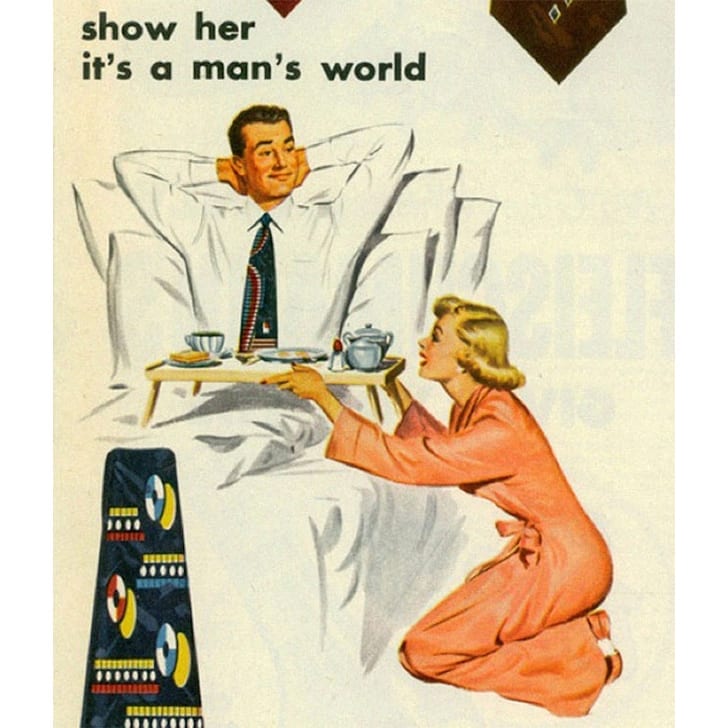
Without even knowing what this advertisement is about, it summarizes how women had been reduced to a stereotypical role in life just based on their gender.
This is an ad for shirts and ties, and it seems to explain that this man goes through troubles. It can’t compare to what his wife has to endure; for starters, she has to wake up early enough to prepare breakfast. She then has to serve her husband breakfast in bed and clean up after him. The only struggle he has to concern himself with is making sure that his tie doesn’t get in the way of enjoying his breakfast.
His wife is probably the one who laundered and ironed his clothes and set them out for him complete with a suitable tie for the day. They also had to position the woman in a kneeling position showing that she is beneath him.
Hard Work Makes You Look Cuter
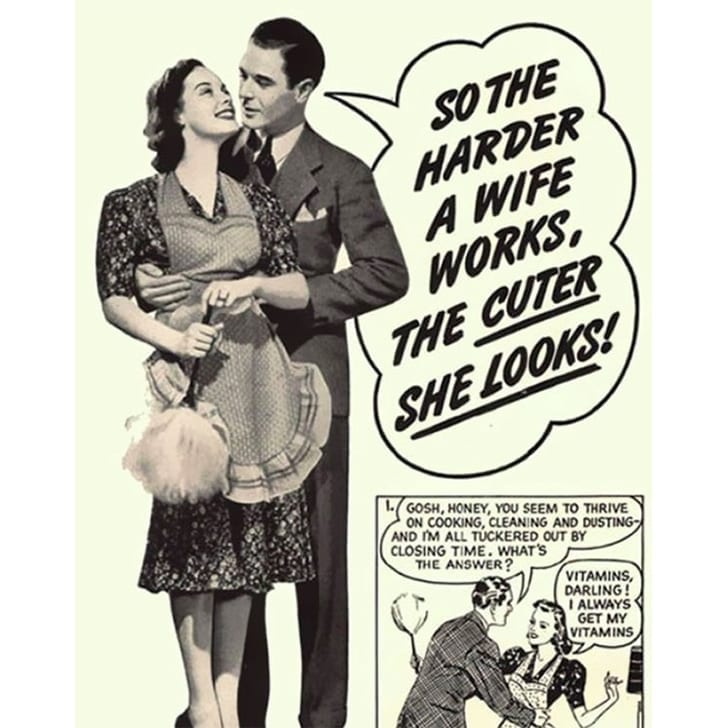
Dusting, cleaning, and cooking makes women irresistible to their husbands. Don’t take our word for it; this ad made the claim but the kick was in the vitamins.
Regardless of how you look at it, the overall message looks down on a woman’s role in her household. Her husband gives her some credit for having the energy to keep going despite all the dusting, cleaning, and cooking she’s been doing all day. However, they also imply that she can only do it all with the help of some vitamins. Then there’s the remark about her looking cuter the harder she works.
Were there no men back then who enjoyed cooking and tending to things around the house back then? Changes in customer interests and shifts in social and political climates have brought us a long way since such ideologies were acceptable.
Deodorant Failure Means Goodbye
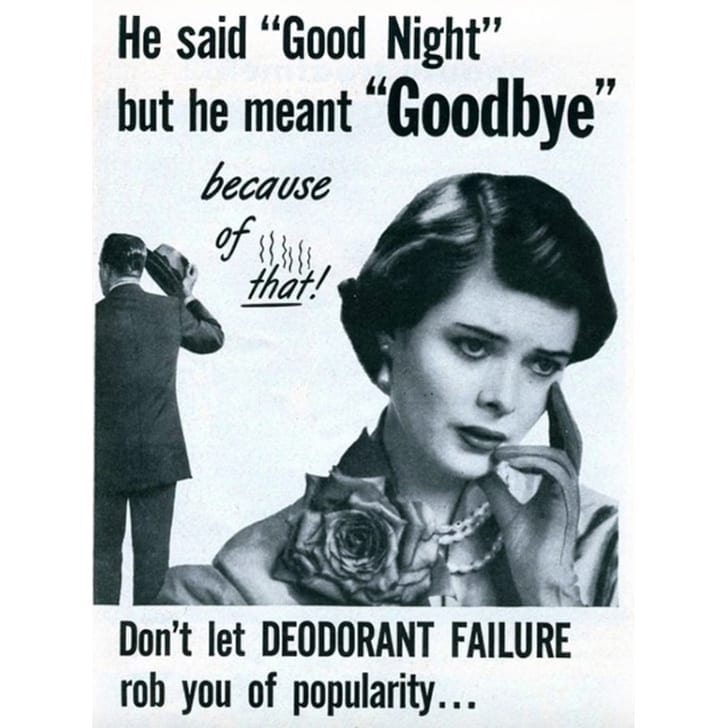
The standards women had to live through back in the day so that they could be considered the perfect wives are appalling. If they weren’t in the kitchen, they had to walk around smelling like flowers or risk pushing prospective suitors away.
They don’t even leave it to interpretation and warn women that deodorant failure means goodbye. That’s how past ads tried to sell products to women; they blatantly sold it as the secret behind helping a woman attract and keep a man. If anything, they pushed the perspective that women only ever cared about pleasing men. Not to forget the subliminal message that women always needed help.
Vintage ads give us a window into past cultural values and remind us just how far we’ve come. Shaming and humiliating women might have been a marketing tactic that resonated with folks back then, but it is a strategy that should be buried in the past.
Dumb Beauty
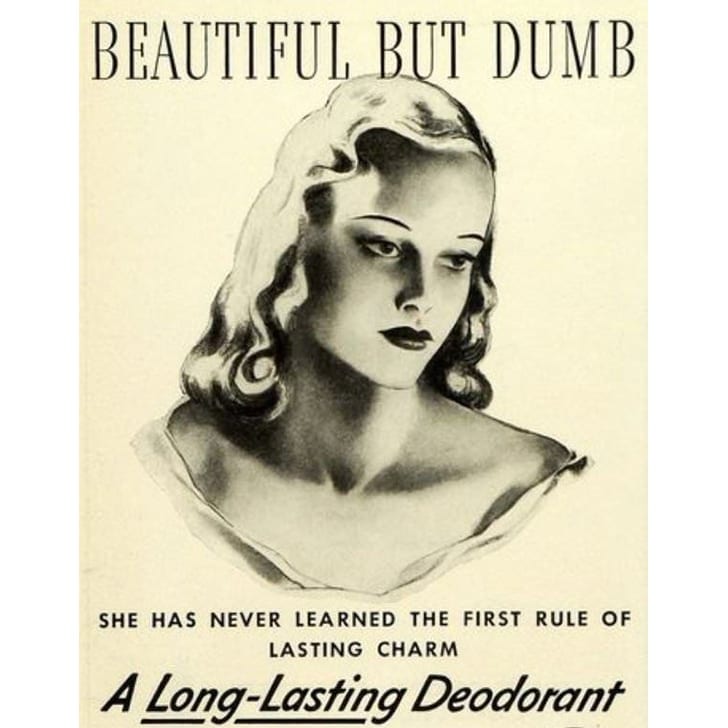
It wasn’t enough to be beautiful, but you also had to be smart. In this case, smart meant that you had to remember to put on some deodorant.
This deodorant brand didn’t mince its words and told women that they were beautiful but dumb if they didn’t smell good. Women supposedly lose their charm if they are not wearing a lasting deodorant to mask their natural scent. Let’s not forget that it always leads back to the main issue; if she does not smell good, she won’t find a husband. It’s hard to believe that this was an ad that was in circulation all those years ago.
Image advertising was the norm some sixty years back. The text-driven ads also didn’t shy away from objectifying and ridiculing women. Men have considered breadwinners while women were homemakers, and sadly, that’s what shaped social perceptions and drove ad narratives.
1890s Delightful Brain Tonic
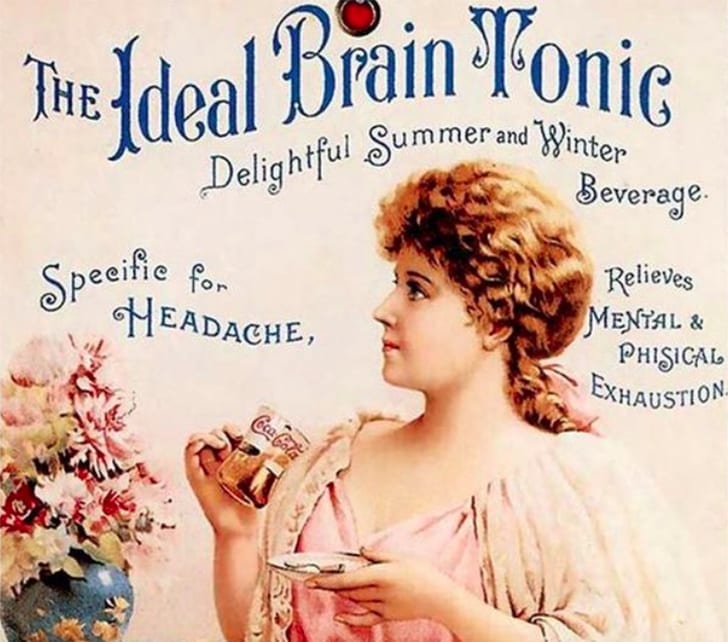
Several products stay the same as the years go by, and often, it’s the branding and ad strategy that changes. Today we know this globally famous soda company, but in the 1890s, they were battling to stand out.
They touted the beverage as a delightfully ideal brain tonic for winter and summer. The company also claimed that the drink could cure headaches and relieve both physical and mental exhaustion. This was well before the Food and Drug Act, which was implemented in 1906. Imagine the penalties the company would have faced for misleading the public about the drink’s alleged health benefits.
Before 1904, cocaine was allegedly part of the “brain tonic’s” secret recipe. Earlier advertisements described it as an “intellectual drink” containing the stimulant properties of the coca and kola (cola) plants. Later ads, like the one above, promoted it as a brain tonic that could treat all nervous affections.
The Eternal Bridesmaid
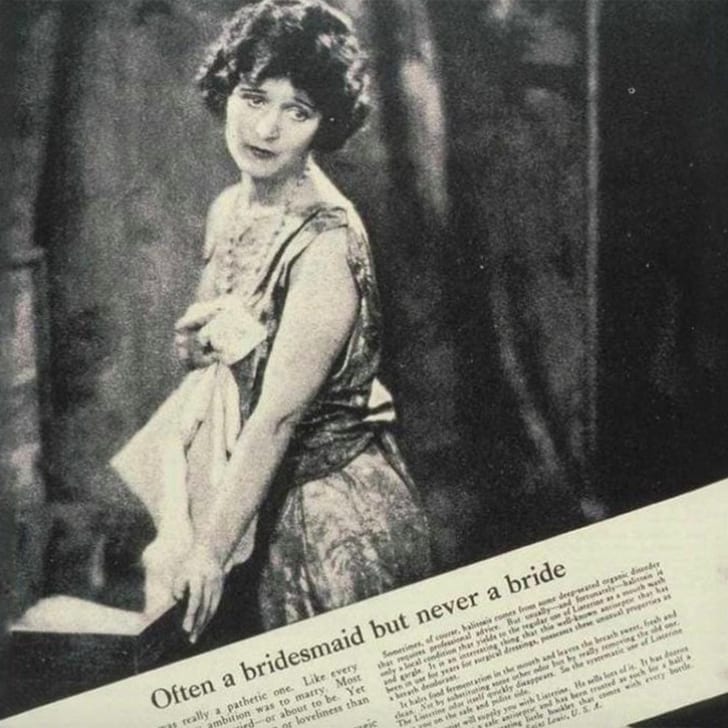
Next, to constantly reminding women that they were created to spend their lives in the kitchen mostly, most vintage ads also told them that they were not complete without a man.
The women in these ads often had a forlorn loom dreaming about finding a husband to cook for, and clean after for the rest of their lives. We now understand and accept the diverse roles women take up in society, and also the diverse nature of relationships. This 1920s ad was plain backward warning women that they would live out their lives being eternal bridesmaids if they didn’t use mouthwash.
We have to wonder; how bad was women’s oral hygiene back then that just about every mouthwash advertisement targeted them? Do we also have to mention that women weren’t created to merely getting married, cook, and clean after their significant others?
Marriages Thrive In The Kitchen
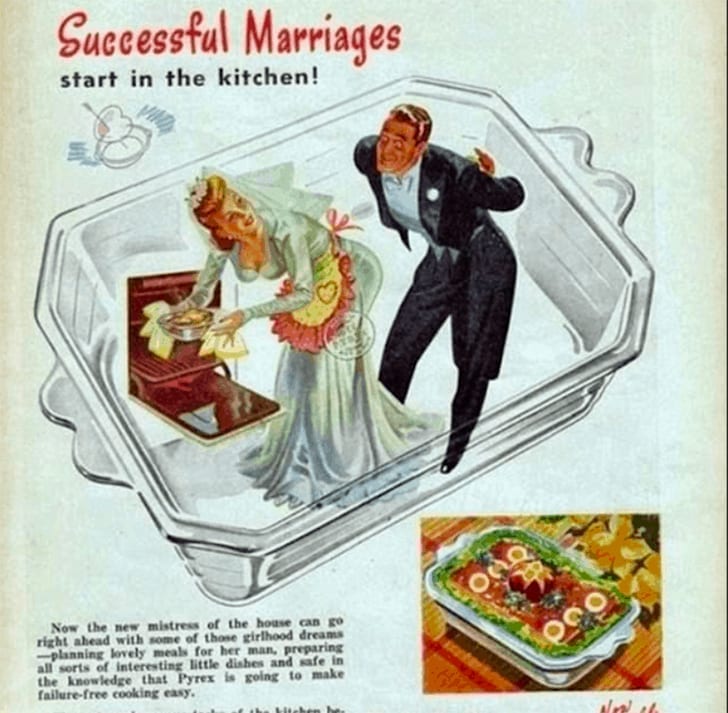
Vintage ads must have been conceptualized and executed by a single person. It’s hard to wrap our heads around a team of marketing managers approving these advertisements.
Newlyweds were the target of this advert, which advised couples that marriages thrive in the kitchen. It depicted a woman still in her wedding dress tending to a hot stove as her husband waits for the lovely meal she’s preparing. The product in question was an ovenproof dish which they describe as the mistress in the house. This must have been a wedding gift she got, and she just couldn’t wait to get home and put it into good use.
These days advertisers conduct pre and post-tests to measure the effectiveness of their marketing strategies. A clear message and call to action are some of the elements that create a compelling ad. These aspects were utterly lost in vintage ads.
The Benefits Of TV For Kids
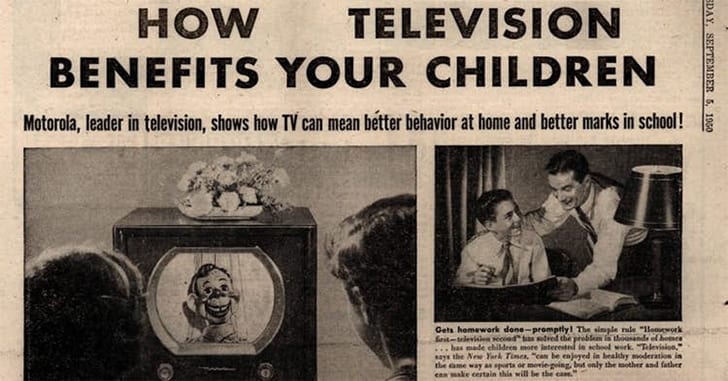
We’ve indeed come a long way from a time when anyone needed convincing that they should watch television. To put it into perspective, TV manufacturers released ad campaigns telling parents about how their children stand to benefit from television viewing.
These days parents try their best to cut back on the time their kids spend watching TV shows. There are now even extensive studies that link sleep problems, obesity, behavior issues, and poor grades to excessive TV viewing. That’s why this vintage ad would have no place in today’s landscape, but in the ‘40s and ‘50s, when commercialization of TV sets peaked, it was a selling strategy.
Today the American Academy of Pediatrics recommends no screen time for babies and toddlers. Some screen time is agreeable for toddlers from 18 to 24 months. Preschoolers should not spend more than an hour each day watching TV, while kids aged 5 to 18 years need consistent limits.
Women Can Only Open Twist Off Caps
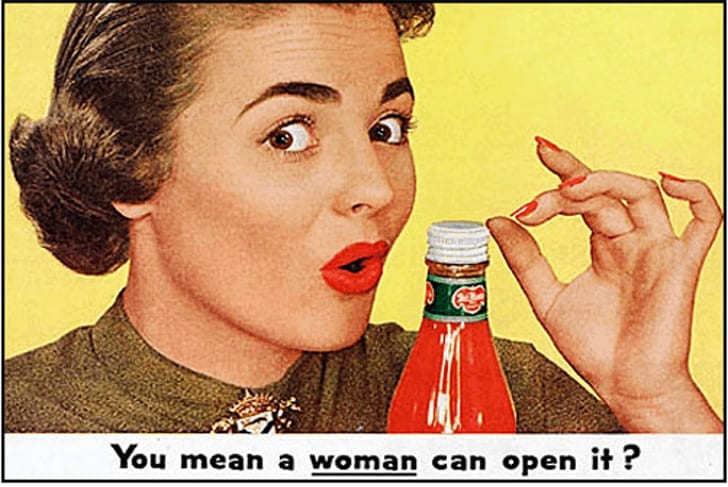
In 1953, when this advertisement was released, it went mostly unquestioned. A couple of years later and it was understandably the center of controversy.
Here was a ketchup bottle that didn’t need a knife blade or a husband to pry it open. Women could simply twist the cap off; it had been simplified just for them. The aluminum twist-off cap could easily spin-off for easy access to the bottle’s contents, and they even described it as the world’s “most cooperative cap.” Whatever would women do if men never existed to help with the heavy lifting, should have been their closing remark!
They even went a step further to underline the word woman, just to drive the point across. Women were considered the weaker gender, and if a man wasn’t in their life making things simple, it was up to product manufacturers to simplify their lives.
Get Your Child Drinking Soda Early Enough

This beverage is well known for its fizziness and high sugar content. The ingredients the popular soda contains also aren’t healthy when consumed regularly.
Now, picture the long-term effects of starting your kiddo on this drink as soon as they can slurp it up. Remember that the company marketed it as a brain tonic that could highly help during children’s early formative years. They argued that it would guarantee kids a lifetime of happiness if they started consuming the beverage early enough. Thankfully, it turns out that this is a vintage parody ad that was created by RJ White in 2002.
The “Soda Pop Board of America” endorsed this advertisement claiming that the soda also functioned as a personality booster and that it offered body essential sugars. Despite being fake, it paints the reality of how the lack of consumer awareness might have harmed masses in the past.
The Best Thing That Happened To Air Travel
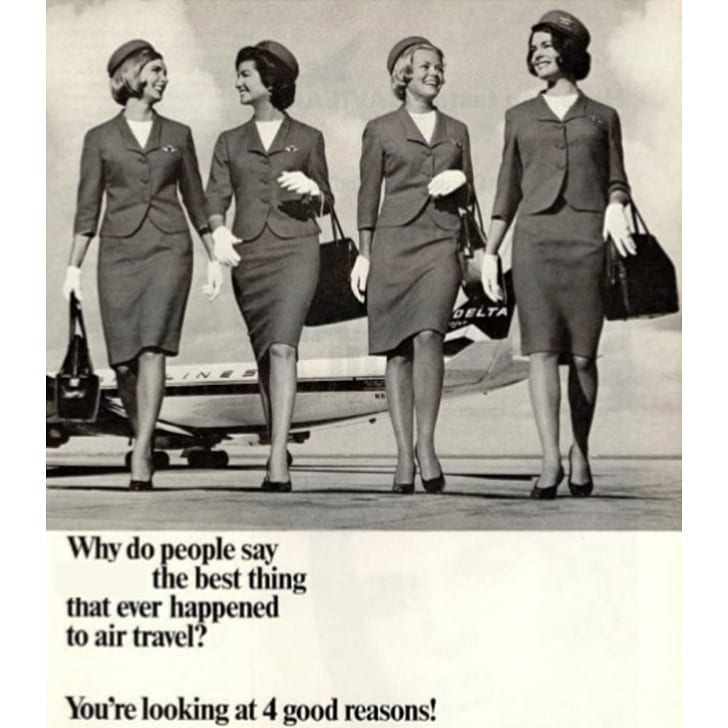
The skewed perception about flight attendants goes back to the ‘50s and ‘60s when they were depicted as being at every man’s beck and call. Advertisers didn’t prioritize aspects like services, location, and cost, but instead, they relied on the attractiveness of the female crew.
Airlines employed unsettling strategies like portraying women as child-like girls, and they also trained female employees to eventually become wives for their male travelers. The bottom line was female flight attendants were viewed as products the airline offered. Such advertisements were common, suggesting that women were undoubtedly the best thing that happened to air travel.
This wasn’t even nearly half as offensive as other airline ads like the ones that read like dating profiles. They would include the image of one of their flight attendants accompanied by a write up outlining her hobbies and asking passengers to watch her closely on their next flight.
The Fun Hairdryer
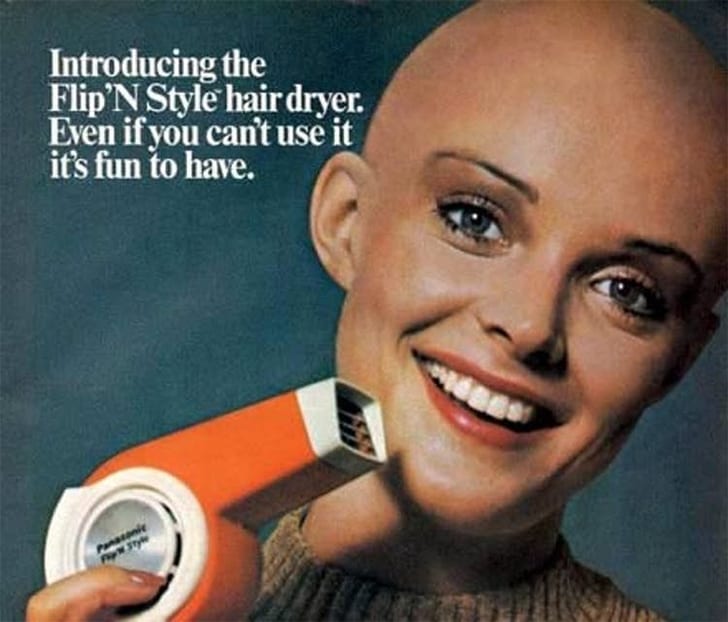
Marketing campaigns gear towards reaching a certain demographic who stand to benefit from the product at hand. The genuinely successful advertisements are those that ensure universal product appeal.
However, this inconsiderate hairdryer ad tries to suggest that the people who visibly don’t need it can still benefit from having one. The bizarre part of it all is that a group of ad executives gave this marketing strategy the green light. The 1972 ad even went a step further and included a bald model to promote the hairdryer. Even now, we can’t find a good enough reason why anyone would buy a hairdryer they didn’t need just because it is supposedly fun.
Several things could have saved this advert from coming off as an insult; for starters, they should not have used a bald model. Maybe they should have shown multiple women using the hairdryer to sell it as the right styling tool for everyone.
Catch Him With Donuts
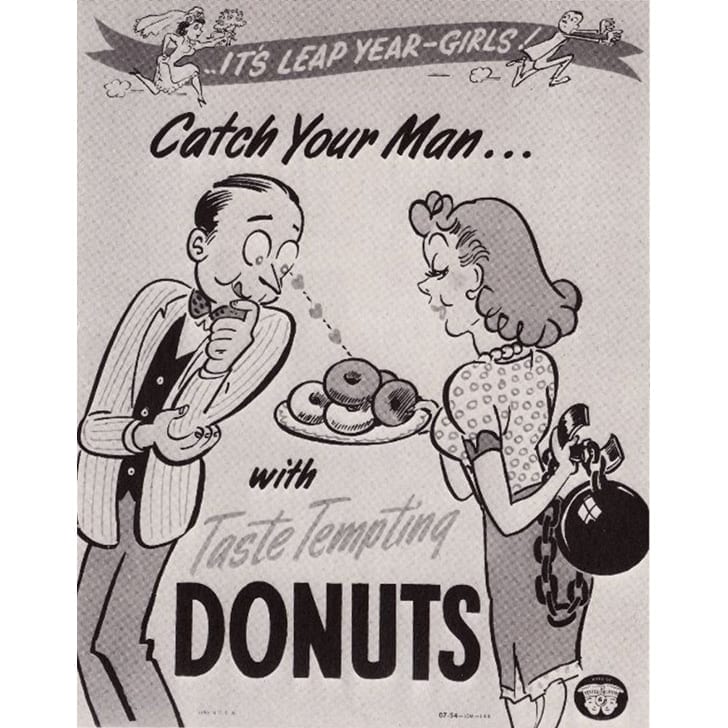
Women in the decades past had pressure to settle down in marriage quickly. They first had to bait their man by going the stereotypical route.
They say that the way to get to a man’s heart is through his stomach, and this ad suggests doing it with a plate of donuts. The woman is hiding a ball and chain behind her back, which was the term used by men who felt trapped in their marriages/relationships to refer to their significant others. Wonder which is worse, that men can be baited with food or that women exist to tie down men in marriage.
This donut company would have been knee-deep in lawsuits if anyone could bite what they were selling today. Consumers value authenticity, and it starts with brands delivering precisely what they promise. We doubt that women can attest to these donuts, paving their way to the altar.
All Eyes On You
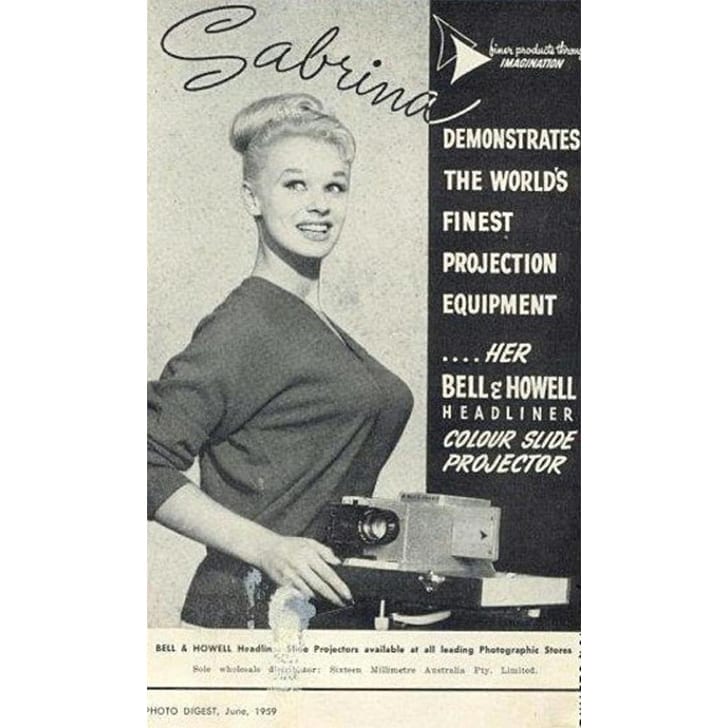
The objectification of women in advertisements started way back, and the trend continues, although in a much subtle way. A majority are often effective except for the ones that send mixed messages.
Take this 1959 ad campaign that is less than clear about the product that is up for sale. The model stands out, and without reading the text, we would conclude that it’s an advertisement for breast augmentation surgery. Then we read the accompanying text and realize that they are promoting projection equipment. The model must have been so good at her job that she even made the ad executives forget what they were selling.
We live in the age of Photoshop, where advertisers have exploited the photo-editing software to manipulate images to suit their messages. Beauty product advertisements have often received backlash for over-editing female features. Thankfully, more women now work in ad agencies, and they contribute to the changes we are seeing.
Babies Shouldn’t Be Sun Starved
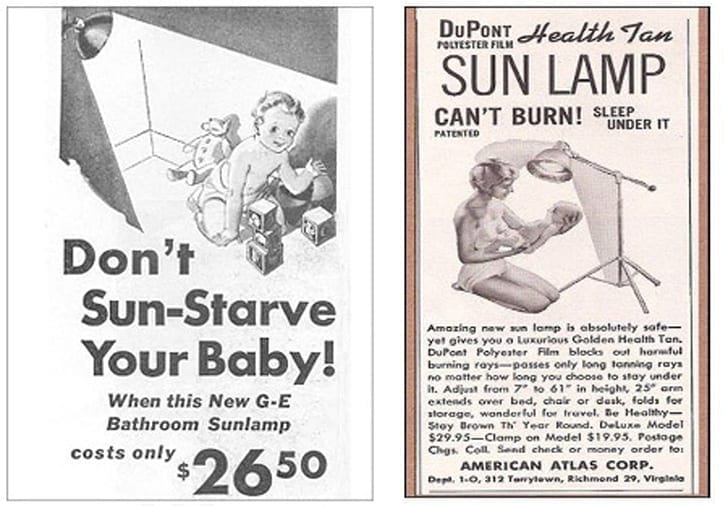
New parents are flooded with information and products that their children need. These days, there’s the FDA and extensive research to help with the process.
In the ‘30s, parents had to decide if their little tots needed a Sun Lamp. The advertisement told them not to sun-starve their babies, and the bathroom sunlamp was the solution to offering their kiddos a much-needed health tan. The appalling part, besides the fact that such a contraption existed, was the suggestion that kids can sleep underneath it. There’s also the part about the lamp being patented, which tells us that the manufacturer believed in the product’s viability.
Opinions might vary, but generally exposing an infant to sunlight between 7 a.m to 10 a.m for anywhere from 10 to 15 minutes is sufficient for them to draw its benefits. Exposure shouldn’t exceed 30 minutes because young tots have sensitive skin.
The Frightening Morning Mouth
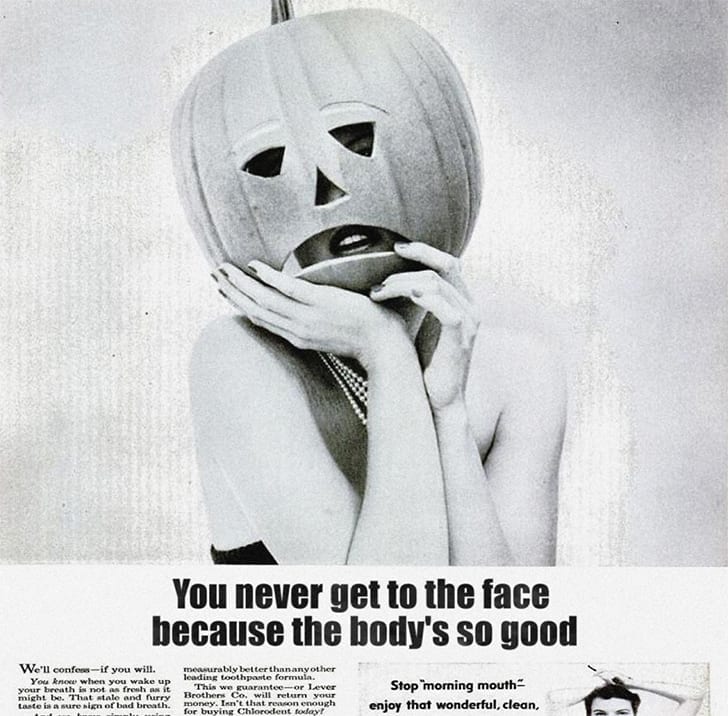
No one likes morning mouth, and last we checked everyone suffers from this common issue at some point. In the 1950s, for some reason, women were the ones warned to keep their morning breath in check.
Shockingly, this advert suggests that men are more frightened of morning mouth than a Halloween mask. They even go a step further and include a woman wearing a pumpkin mask to drive the point across. If we go with this claim, it means that no one would be married because men would flee at the first whiff of foul breath in the morning.
An activist/artist who goes by the name Saint Hoax twisted these vintage ads. He swapped out the original headlines with misogynistic quotes a certain head of state has made about women. For this ad, the quote read that you don’t get to the face if the body looks good.
The Wife’s Warning Tale
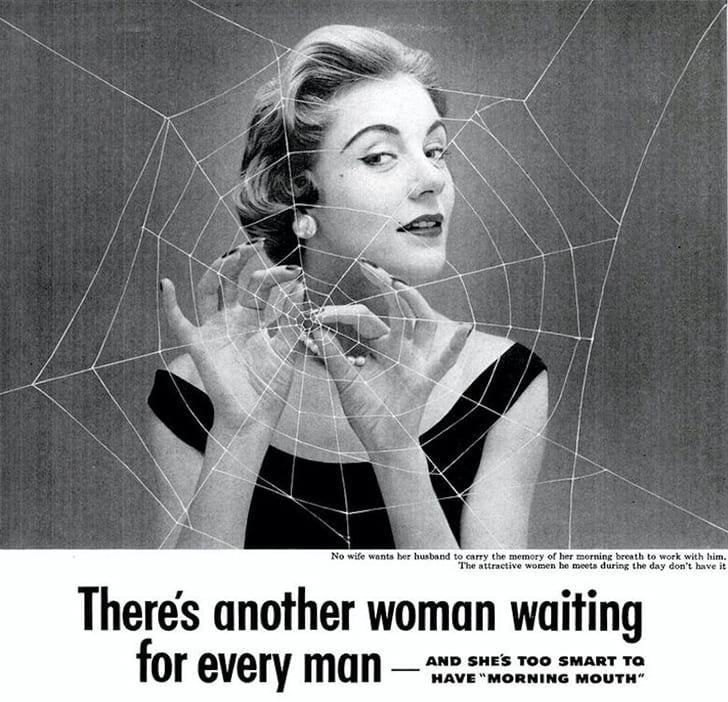
Another theme that vintage ads exploited was the suggestion that there was always a woman lying in wait to take your man away.
Unsurprisingly, this mints ad shamelessly reminds wives that their bad morning breath might drive their husbands into the arms of other women. They even include a vixen behind a web that she will presumably use to ensnare your husband. These marketing campaigns were entirely misplaced because research now shows that women brush their teeth more than men. Women also pay visits to the dentist more frequently, and in general, they pay more attention to their oral hygiene.
Men suffer from more dental issues compared to women because they are less proactive about maintaining their oral wellness. Men also experience the most number of tooth trauma incidents and tooth loss from playing physical contact sports like wrestling, tackle football, and rugby.
Free For Chubbies
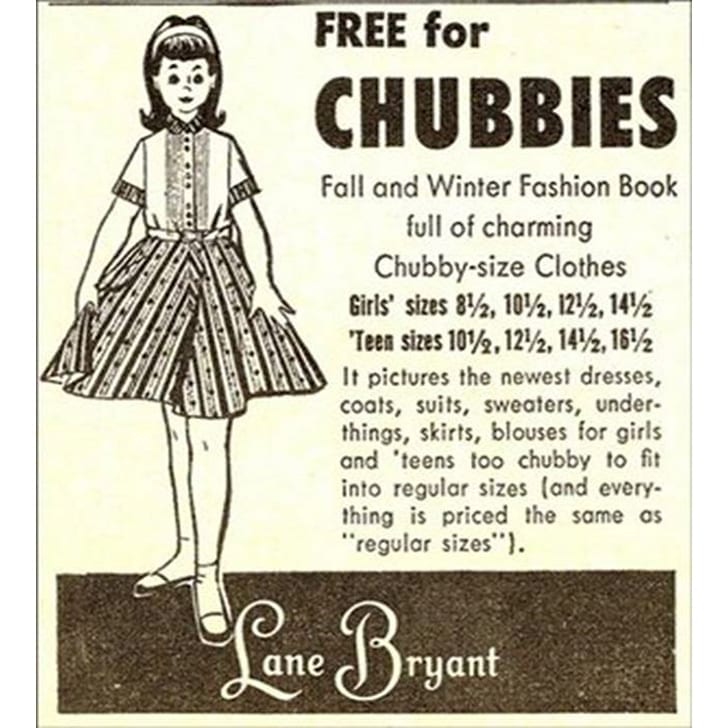
We live in a diverse world, and that’s what makes it more interesting. However, being slim was a massive trend in the ‘60s, and anyone who carried a few extra pounds faced the insensitive wrath of the advertisers.
This ad targets teens, and it lists sizes that are considered as “chubby.” As if they are doing this group a favor, they say that the fashion book is free for chubbies. They keep driving the point home that it’s meant for teens who can’t wear regular sizes. Even if the ad targeted adult women, there’s no way to make it politically correct.
The quest to slim down to a desirable weight led women to extremes. There was the tapeworms diet that helped women banish fat. The tapeworm cysts ingested in pill form came with side effects, including diarrhea, bouts of vomiting, and painfully excreting the tapeworms.
The Best Workout Is Cleaning
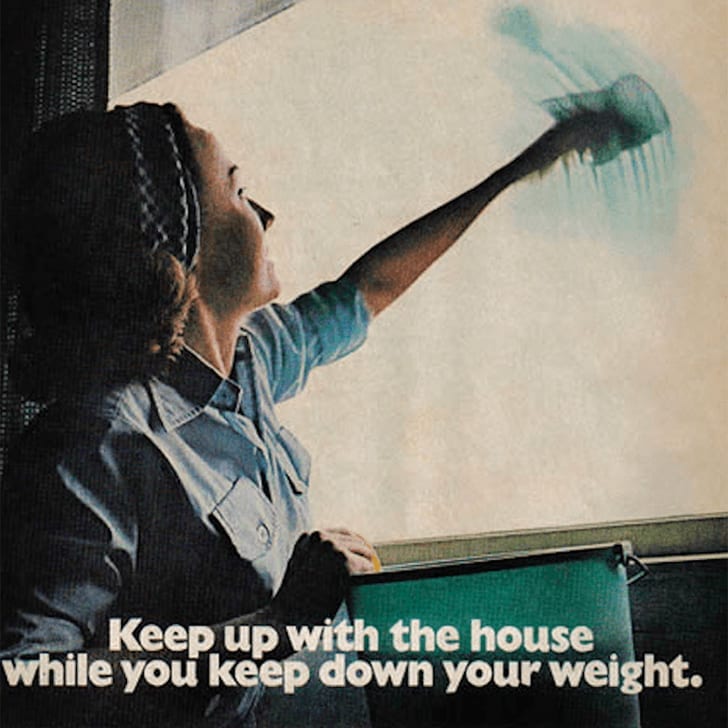
We have mixed feelings about this one because there are house chores that can help you burn calories.
Doing chores around the house can be physically demanding and could easily translate to fat-burning. Regular tidying activity that involves reaching into cabinets or picking things from the floor can help you burn 238 calories in an hour. Mopping helps to work your legs and strengthen your arms. Only that this advert wasn’t entirely promoting cleaning as the best way to keep weight at bay. The cereal company overtly implied that eating their product would give women the right amount of energy they needed to go about their household chores.
Even washing the dishes and doing your laundry can help you burn some calories. Shoveling snow is one of the grueling tasks that can help you burn the most. An hour of shoveling can help you burn as much as 470 calories.
Pens For Girls
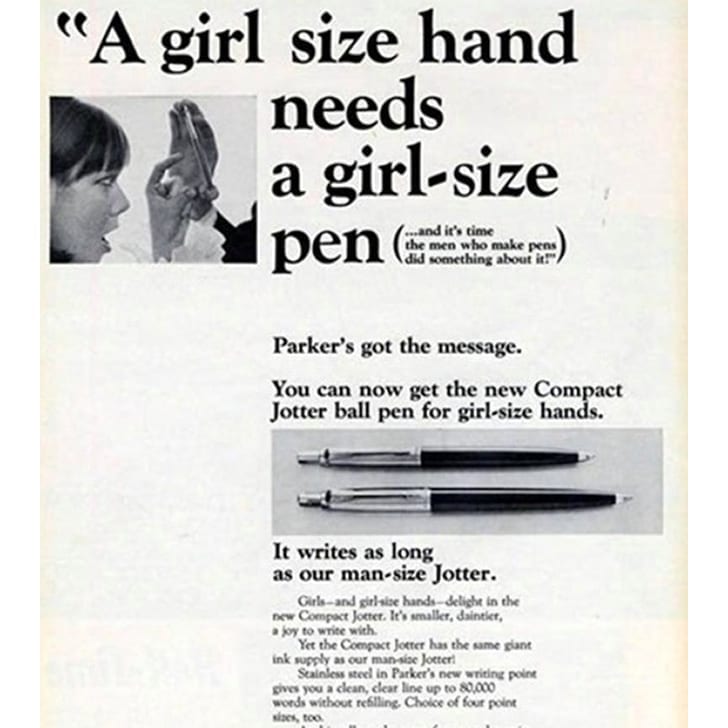
Men and women certainly have evident biological differences. In the past, it seems like one aspect that was a matter of debate was the size of each gender’s hands.
This 1965 ad informs us that a girl size hand should handle a girl-size pen. There’s also the text in small print saying that it was about time that men who made pens addressed this issue. The selling point is that the compact pen writes as long as the brand’s man-size pen. Where was this brand headed if this campaign had been successful? Next, they would have launched a collection of toddler-size pens.
It was unnecessary to have the two distinct lines because essentially, they were the same size if the ink lasted the same amount of time. We dare say that there are lots of women with hands that are as big as their male counterparts.
Drink Your Problems Away
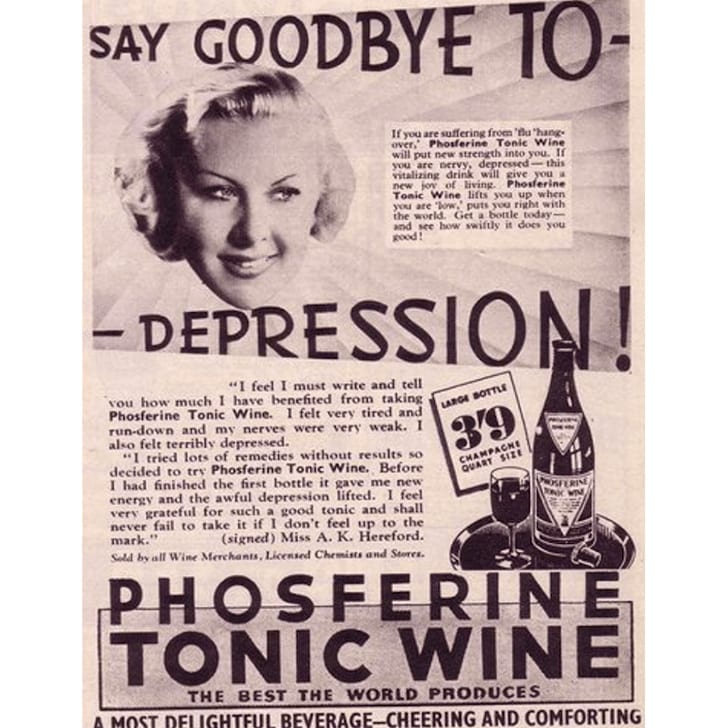
They say that you can’t drink your problems away, but you can find some flitting happiness from the bottom of a liquor bottle. That sums up this wine advertisement.
They share a written testimony from the pictured lady we presume who claims that the wine lifted her depression. The woman says that downing the first bottle gave her renewed energy and lifted her awful depression. She explains that she will always turn to the good tonic whenever she’s feeling blue to lift her spirits. We imagine that getting buzzed was a strange feeling back then and it didn’t occur to her that’s what she had described.
The message was that if you didn’t feel happy, then you could chase away the feelings with a bottle of wine. It didn’t matter how many bottles you had to go through, but you were guaranteed to get some cheery and comfort from the delightful beverage.
The Wife Saver
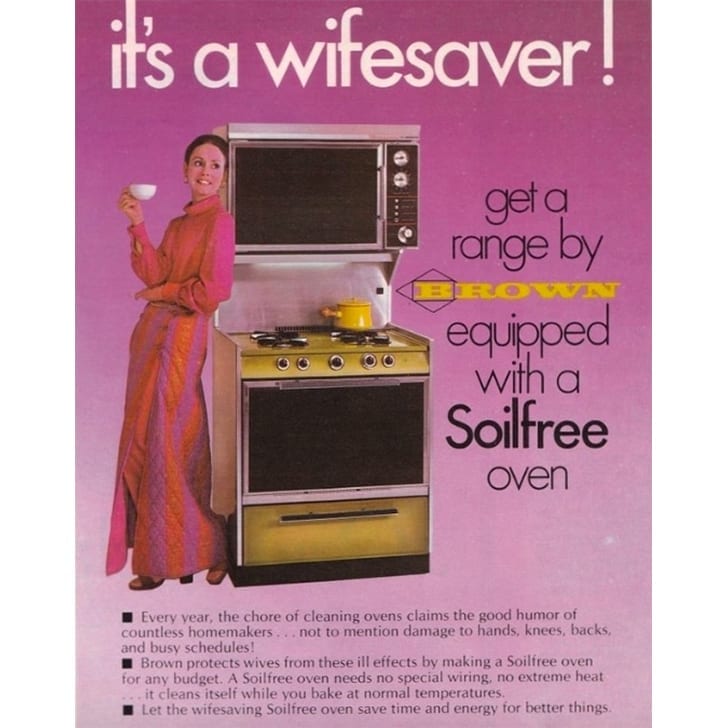
Since women were already painted as a lot that spent their waking hours in the kitchen, naturally, household appliance ads targeted them.
This appears to have been a ‘70s ad campaign aimed at letting women know that there was a solution to grabbing a breather from their cooking and cleaning duties. It came bundled in this oven that they touted as a “wife saver.” They go on to describe how cleaning ovens had been a back-breaking chore that, until that point, had damaged the knees and hands of homemakers. This self-cleaning oven freed up a woman’s schedule, allowing her to save her energy for other things.
Besides the stereotyping, notice how they refer to women as homemakers. They also suggest that the oven can free up a woman’s busy schedule. Well, a woman was expected to spend most of her time in the kitchen, we wonder if this is the busy schedule they are referencing.
Early Shavers
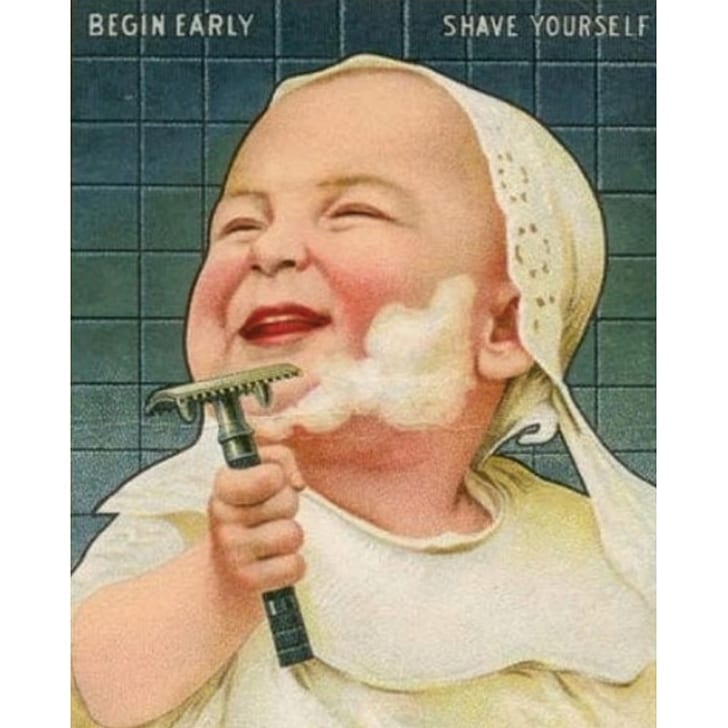
The category of adult products fashioned for babies remains one of the highly disturbing ones. It started with this product from the well-known shavers and razor manufacturer, which they thought would fly off the shelves with the help of this advertisement.
It’s all kinds of weird seeing a baby brandishing the razor shaver with his chin lathered in shaving foam. Even if it’s a mental-play sort of ad targeting adult men by implying that the shavers will leave them with a baby-smooth face, it’s just disturbing. We believe that everyone knows that they should never leave a razor near a child.
Beards are in trend these days. Experts theorized that the trend picked up in the wake of the 2007/2008 financial crisis. Men grew their beards perhaps to appear older so that they would have an advantage in the job market over their peers.
Buying The Pants In The Household
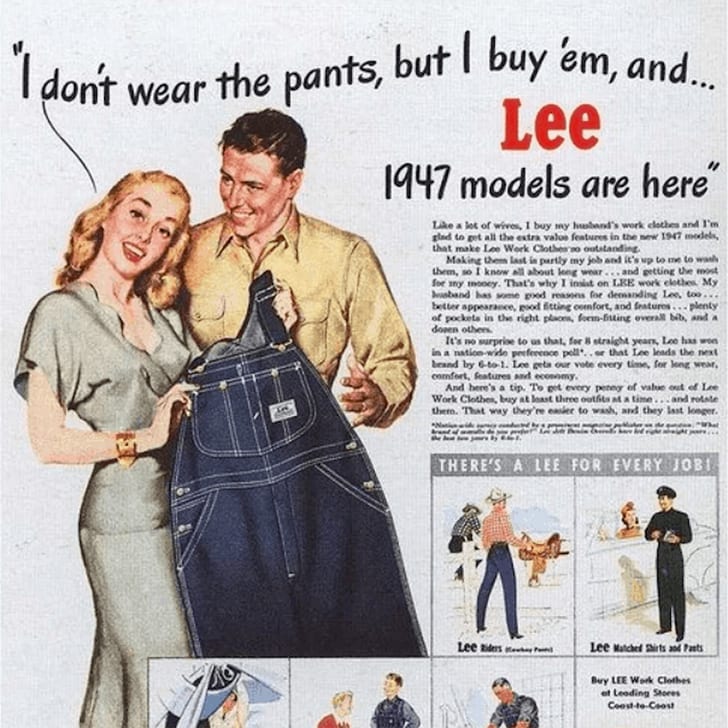
Women in the ‘40s, and just about every other period before that, may not have worn the pants in the house, but they were in charge of buying them.
Besides slaving in the kitchen and spending her time consumed with house chores, the 1947 wife was also required to squeeze in time to buy her husband some work clothes. The ad even recommended that wives should get their husbands three outfits at a go. That would somehow ease their washing duties because their husbands would have three changes of outfits to rotate. What a time it was to live with such prejudice against women.
In the 19th century, women started championing the right to wear pants, but it wasn’t fully adopted as an everyday outfit option until the 20th century. Levi Strauss & Co changed the course of history when they introduced the first exclusive jeans for women in 1934.
Cellophane Wrapped Gifts
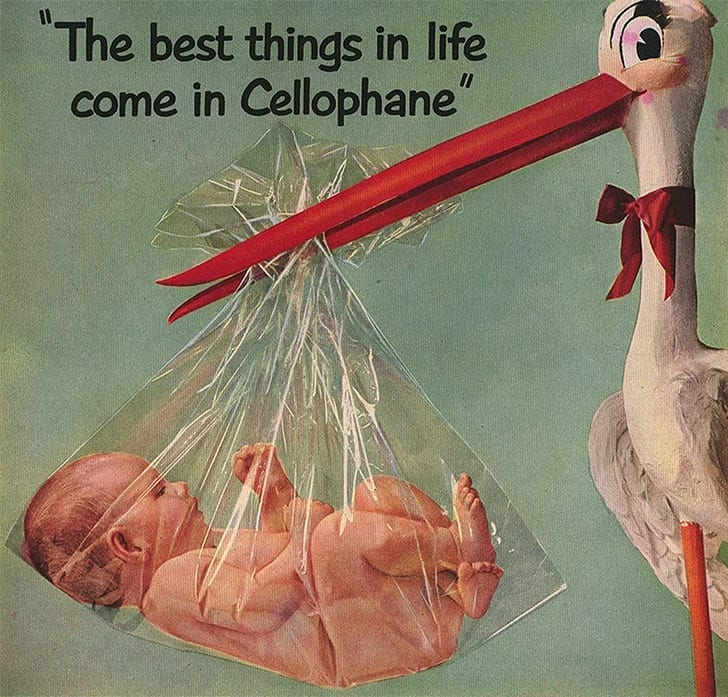
We can all agree that children are precious gifts, and the old folklore about storks delivering newborns to newlyweds is still widely prevalent.
This ad ruins this precious idea by trying to sell the idea that the best things in life are cellophane-wrapped gifts. Cruelty and child abuse are some of the thoughts that come to mind thanks to this highly inappropriate advertisement. Absolutely anything else, besides a child wrapped up in that plastic bag, would have maybe sold the message. Just the thought of this innocent child being subjected to this crude and reckless marketing idea gets us all riled up.
Whether or not they neatly wrapped that innocent baby in cellophane or used some photo-taking trickery equivalent to Photoshop, it’s just disturbing and wrong. Sadder is the heartwrenching statistic that about 20 children die annually through plastic bag related suffocation.
Kids Need Energy
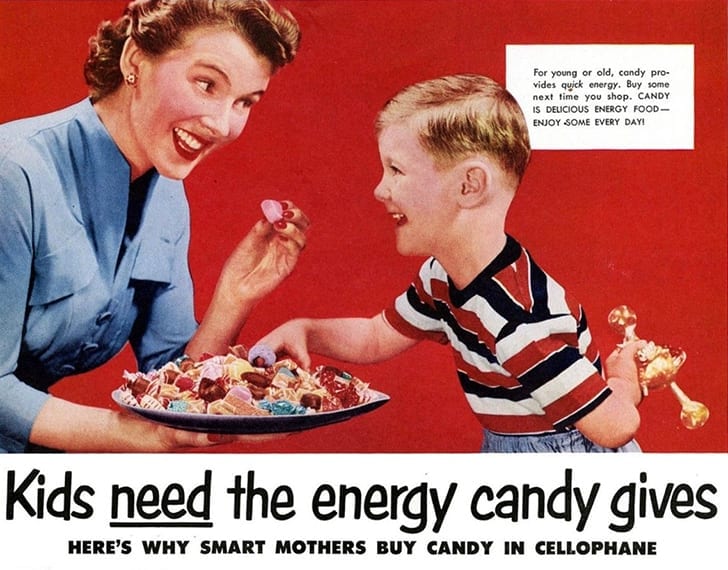
We have to acknowledge that the general public these days is far more informed about the dangers of excessive consumption of candy and other treats. Back in the day, these sugary treats were marketed as energy givers.
Such advertisements tried to drive the message across by underlining certain words. In this case, they promote the idea that kids need energy from candy. While at it, they even insult women who don’t feed their children, the cellophane-wrapped sugary treats implying that they are not smart. Knowledge is power, and we are grateful that we are now better educated about such things.
The American Heart Association recommends that children aged 2 to 18 shouldn’t consume more than 6 teaspoons/25 grams of sugar daily. They shouldn’t consume more than eight ounces of sugar-loaded drinks weekly. Younger children have no business consuming sugar at all.
Happier With A Hoover
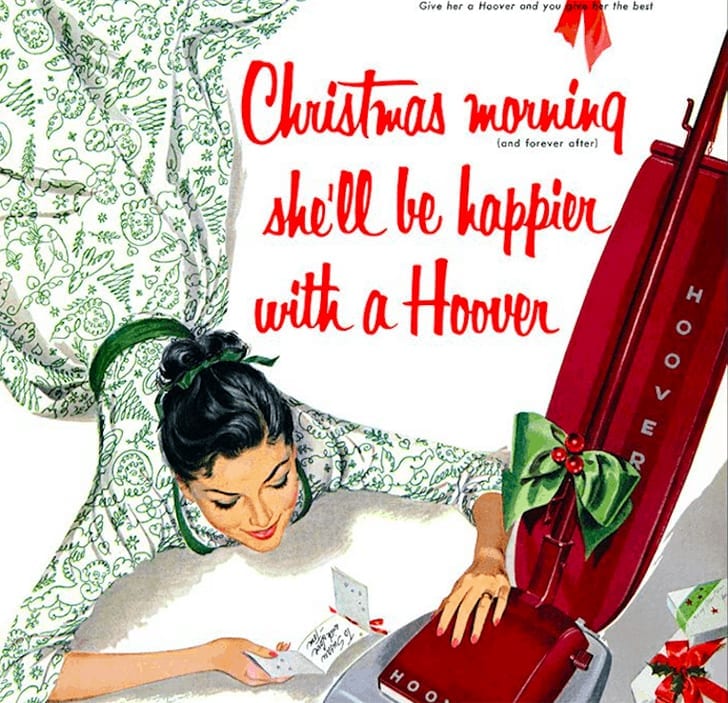
At this point, we think that the only thing the ‘40s or ‘50s women ever wanted for Christmas was to stay out of the kitchen. It would also have been a gift if someone else did the tidying up around the house.
This advertisement tells us the reality was that women could never catch a break. Even the Christmas gifts touted as the perfect ones for women of that era were geared towards ensuring that they kept cooking or cleaning. This hoover ad also claims that women are happier when they are cleaning, that is, if they aren’t too consumed with whipping up the Christmas feast.
Vintage Christmas might have looked a little different from how we celebrate it today. 1958 introduced us to aluminum Christmas trees. Bubble lights shot in popularity in the ‘40s and ‘50s. Christmas parades included giant balloons, much like the ones seen during the Macy’s parade.
